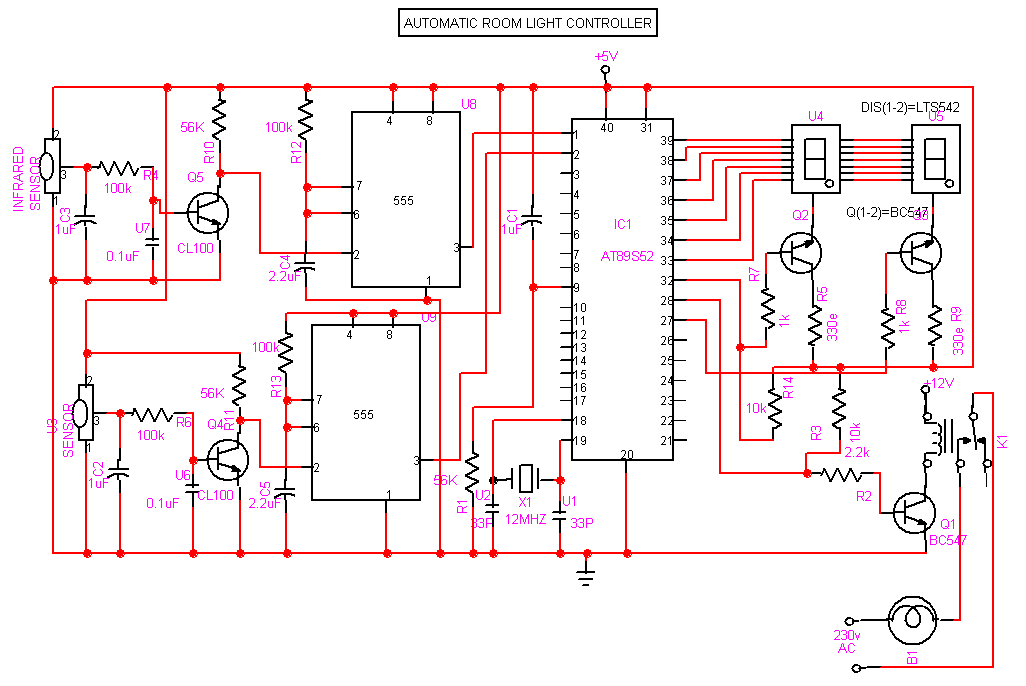
Light Operated Relay Circuit

This light-sensitive circuit can operate a relay to switch on lamps or any AC loads when it detects darkness. It is ideal for use as a switchless night lamp.
The circuit utilizes a light-dependent resistor (LDR) as its primary sensing element. The LDR exhibits a decrease in resistance when exposed to light, allowing it to function effectively in detecting ambient light levels. When the light level drops below a predetermined threshold, the resistance of the LDR increases, triggering the operation of a transistor or operational amplifier configured as a comparator, which subsequently activates the relay.
The relay serves as an interface between the low-power control circuit and the high-power AC load, ensuring safe operation. When the relay is energized, it closes its contacts, allowing current to flow to the connected lamps or other AC devices. The circuit may also include a potentiometer to adjust the sensitivity of the LDR, enabling customization based on the specific ambient light conditions of the installation environment.
Additional components may include a diode across the relay coil to prevent back EMF from damaging the control circuit when the relay is de-energized, as well as capacitors for filtering and stabilization purposes. The power supply for the circuit can be derived from a low-voltage source, ensuring that the control side remains isolated from the high-voltage AC side for safety.
This circuit is particularly beneficial in applications where manual switching is inconvenient, providing automatic operation based on environmental light conditions, thus enhancing energy efficiency and user convenience.This light sensitive circuit can operate a relay to switch on lamps or any AC loads when it senses darkness. It is ideal to use as switch less night lamps.. 🔗 External reference
The circuit utilizes a light-dependent resistor (LDR) as its primary sensing element. The LDR exhibits a decrease in resistance when exposed to light, allowing it to function effectively in detecting ambient light levels. When the light level drops below a predetermined threshold, the resistance of the LDR increases, triggering the operation of a transistor or operational amplifier configured as a comparator, which subsequently activates the relay.
The relay serves as an interface between the low-power control circuit and the high-power AC load, ensuring safe operation. When the relay is energized, it closes its contacts, allowing current to flow to the connected lamps or other AC devices. The circuit may also include a potentiometer to adjust the sensitivity of the LDR, enabling customization based on the specific ambient light conditions of the installation environment.
Additional components may include a diode across the relay coil to prevent back EMF from damaging the control circuit when the relay is de-energized, as well as capacitors for filtering and stabilization purposes. The power supply for the circuit can be derived from a low-voltage source, ensuring that the control side remains isolated from the high-voltage AC side for safety.
This circuit is particularly beneficial in applications where manual switching is inconvenient, providing automatic operation based on environmental light conditions, thus enhancing energy efficiency and user convenience.This light sensitive circuit can operate a relay to switch on lamps or any AC loads when it senses darkness. It is ideal to use as switch less night lamps.. 🔗 External reference





